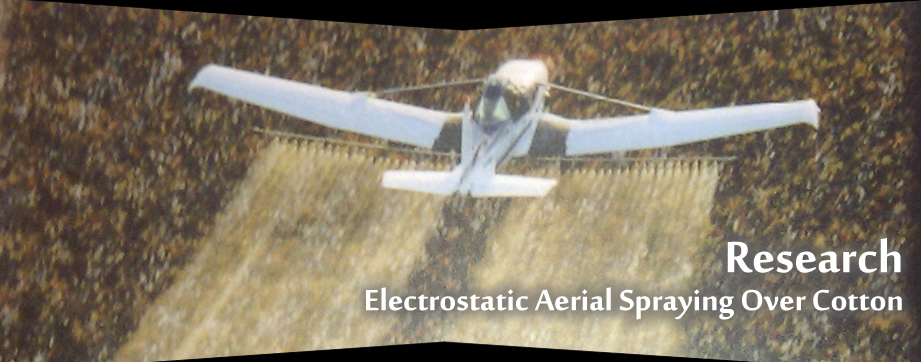ELECTROSTATIC CHARGING OF AERIAL SPRAY OVER COTTON
J. B. Carlton, L. F. Bouse, I. W. Kirk
Article was submitted for publication in September 1994; reviewed and approved for publication by the Power and Machinery Div. of ASAE in June 1995.
The author’s are James B. Carlton, ASAE Member Engineer, Agricultural Engineer, Louis F. Bouse, ASAE Member Fellow Engineer, Agricultural Engineer, and Ivan W. Kirk, ASAE Member Engineer, Agricultural Engineer, Aerial Application Research Unit, Southern Crops Research Laboratory, USDA-Agricultural Research Service, College Station, Texas. Corresponding author: James B. Carlton, 1800 Southwood Drive, College Station, TX 77840; telephone: 409-260-9520.
ABSTRACT
Electrostatically charged aerial spray studies were carried out over cotton fields. The study was planned and structured to obtain needed engineering information regarding the role and domain of applicability of this technology/methodology for aerial application. Spray deposition measured directly and separately from the top and bottom surface of cotton leaves was used to quantitatively evaluate three charging protocols: (1) bipolar, (2) alternating polarity, and (3) no-charge. The bipolar spray charging protocol gave significantly higher deposits on the cotton leaves than the no-charge or alternating polarity protocol. Mean deposit levels were 4.3 times higher with bipolar charge spray (Q/M = ± 2.64 mC/kg) compared to no-charge spray (Q/M = 0 mC/kg). Biopolar charging also showed a 3.0-fold increase in deposit over the alternating polarity protocol (Q/M = 2.64 mC/kg @ 0.29 Hz). Bipolar charging was also demonstrated to be effective in increasing plant canopy penetration and exhibiting a leaf wrap-around effect.
As expected, deposit means were greater on the tops as opposed to the bottoms of the leaves, and upper canopy deposits were greater than lower canopy deposits. The experiments also showed a significant replication effect. The reason for it was not apparent. The large scale electric field effects associated with bipolar charging present information for much further thought and study.
Return to Research Page |



